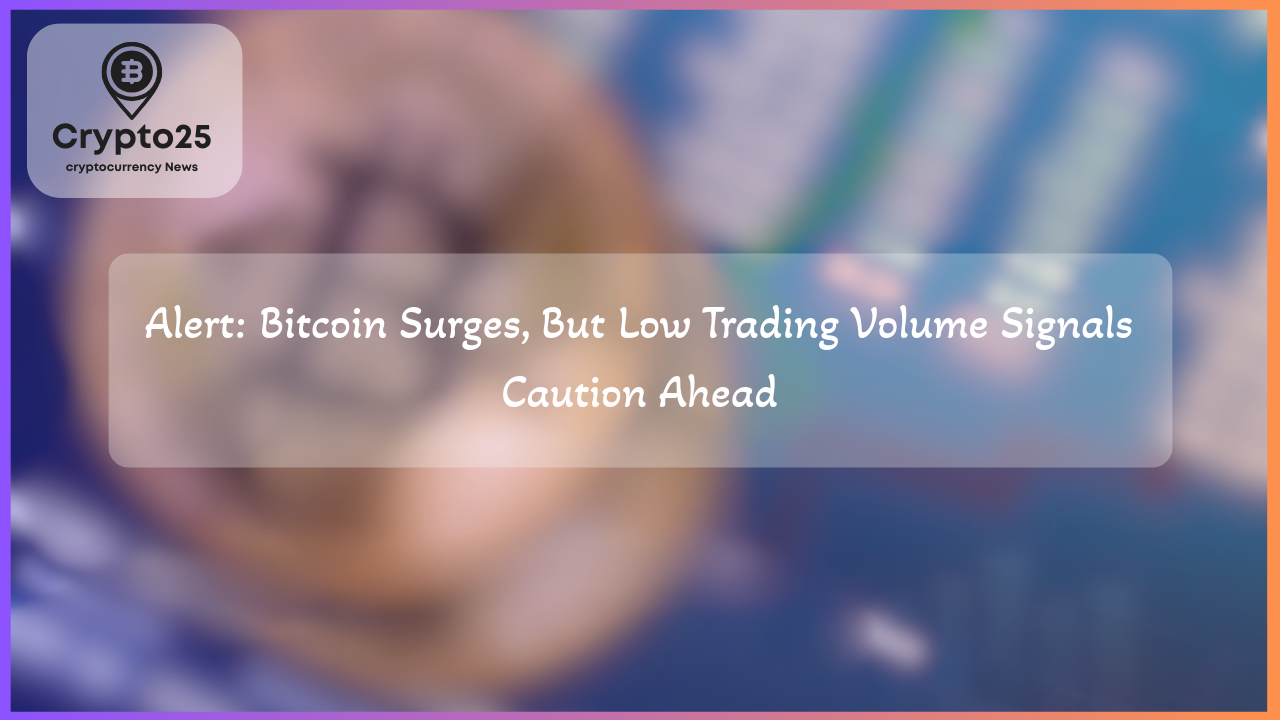
Bitcoin’s recent performance has sparked discussions within the crypto community about its future trajectory. As the flagship cryptocurrency made a notable move by closing above its 50-day simple moving average, traders are cautiously optimistic. However, the market’s low trading volume signals that uncertainty still looms, potentially limiting Bitcoin’s ability to sustain bullish momentum in the short term.
### Bitcoin’s Bullish Signal: Closing Above the 50-Day Moving Average
Bitcoin recently caught the attention of market watchers after closing a daily candle above its 50-day simple moving average (SMA), a critical technical milestone for assessing potential upward momentum. Crypto analyst Scott Melker, better known as “The Wolf Of All Streets,” highlighted this breakthrough, calling it a “notable technical development.” According to Melker, the 50-day SMA is now curving upward, a development that hasn’t occurred in months, suggesting a shift in market sentiment.
Despite these encouraging signs, Bitcoin’s ability to sustain bullish momentum is still questioned. As of April 18, the cryptocurrency’s price corrected to $84,349 but remained marginally above the 50-day SMA level of $84,202. However, it continues to trade below the 50-day exponential moving average (EMA), which sits at $85,328. Historically, the 50-day EMA has posed a more robust resistance level, pointing to the possibility of further market consolidation before any significant price surges occur.
### The Role of Low Volume in Bitcoin’s Recent Struggles
While Bitcoin’s technical indicators suggest a potential bullish breakout, low trading volumes tell a different story. On April 17, daily trading volume on major exchanges amounted to approximately 8,000 BTC—an alarming drop when compared to the 26,000 BTC recorded on April 9. Such diminished activity indicates hesitation among traders, many of whom are holding back amid broader macroeconomic concerns.
The lack of substantial trading volume undermines Bitcoin’s ability to maintain upward price pressure. Cryptocurrencies, by nature, rely heavily on strong participation from retail and institutional buyers. Without this, even significant technical breakouts become prone to reversals. Investors appear to be waiting for favorable macroeconomic developments, particularly as fears of a global economic slowdown persist. The ongoing U.S.-China trade tensions and the Federal Reserve’s hesitation to provide monetary relief have introduced uncertainty across asset markets, including cryptocurrency.
A closer look at Bitcoin’s historical price action reveals a key resistance level at $85,000, marking the upper bounds of a descending channel that has been forming since Bitcoin’s all-time high in January. If current trading volumes fail to pick up, Bitcoin risks falling toward the midline support of the channel, which currently hovers around $75,000. Without renewed bullish enthusiasm, the asset’s price momentum will likely remain constrained.
### Broader Market Sentiment Could Influence Bitcoin’s Next Move
Beyond technical indicators and trading volume, Bitcoin’s trajectory depends heavily on macroeconomic sentiment. Global markets are currently characterized by uncertainty, driven by geopolitical tensions, inflation fears, and central bank policies. These factors often have a pronounced impact on speculative assets like Bitcoin, as risk-averse investors withdraw during times of crisis.
Historically, Bitcoin has served as a hedge against inflation and economic instability, drawing a diverse range of investors when traditional assets like stocks and bonds falter. However, the current market landscape presents a paradox; Bitcoin’s adoption may grow in the long term, but short-term price action suggests caution as investors weigh ongoing economic risks.
| Title | Details |
|---|---|
| Market Cap | $1.2 Trillion |
Looking ahead, it’s crucial for Bitcoin to reclaim key resistance levels with confirmation from increased trading volumes. Should macroeconomic developments turn favorable—for instance, if trade tensions ease or central banks signal dovish policies—Bitcoin could stand to benefit significantly. Such conditions would not only provide stability to global markets but could also reignite retail and institutional interest in cryptocurrencies.
### Conclusion
Bitcoin’s recent close above the 50-day SMA offers cautious optimism for traders anticipating a sustained rally. However, the ongoing slump in trading volume suggests that the market isn’t yet ready for a full-blown bullish run. With resistance levels such as $85,000 looming and broader macroeconomic uncertainties at play, the crypto community must carefully monitor trading activity and external developments. For Bitcoin to reestablish momentum and confirm a bullish trend, increased market participation and favorable macro conditions remain essential.
